ai写作网页,ai改写网站
DouJia 2023-06-19 16:31 334 浏览
镜像使用注册商标ai改写网站,当心侵权
2020年3月,李宁体育(上海)有限公司(下称李宁公司)发现泉州市狠爱鞋 服有限公司(下称狠爱鞋服公司)通过网络平台销售的运动鞋上的相关标识与权利商标近似,有构成商标侵权的嫌疑。于是,李宁公司经公证购买ai改写网站了上述运动鞋。经现场比对,该运动鞋一侧印刷的图案为案外人厦门臻牧贸易有限公司(下称臻牧公司)持有的涉案商标,另一侧则为该商标的镜像标识(下称被诉标识)。李宁公司认为,该被诉标识与权利商标近似,涉嫌构成商标侵权。便将狠爱鞋服公司起诉至福建省泉州市中级人民法院(下称泉州中院),请求法院判令对方停止侵权并赔偿经济损失等共计6万元。狠爱鞋服公司则表示其销售的涉案运动鞋上的商标系曾依法注册的商标,该商标与李宁公司的注册商标不相似,不构成侵权。
泉州中院在一审判决中指出,狠爱鞋服公司销售的运动鞋一侧标有标识与臻牧公司申请注册的涉案商标相同,因此,狠爱鞋服公司销售使用与涉案商标相同标识的运动鞋,侵犯的不是李宁公司的注册商标专用权。此外,由于每只鞋有两个侧面及每双鞋本身左右脚的原因,鞋类产品在印制标识时需要对称印制镜像标识,而被诉标识是对涉案商标的镜像使用,侵犯的不是李宁公司的注册商标专用权。
一审判决后,李宁公司不服,遂上诉至福建高院。二审主审法官袁春怡表示,权利商标由公司创始人李宁名字的首字母“L”演化而来,经设计由艺术化的一撇一捺组成。狠爱鞋服公司使用的被诉标识也是由艺术化的一撇一捺两部分组成,差别仅是在一撇的右上角多了一个小勾。被诉标识组成部分的相对位置、角度以及线条的粗细变化均和权利商标基本一致。当把被诉侵权标识使用在鞋类产品上时,从整体上看,相关公众难以注意到小勾的差异,因此,被诉侵权标识设计风格和视觉效果与权利商标差别细微,容易造成相关消费者的混淆误认,构成近似商标。
至于狠爱鞋服公司关于被诉标识系对涉案商标的镜像使用,因此,其不构成对李宁公司注册商标专用权的侵犯的主张。袁春怡表示,根据我国法律,商标权人超范围使用的商标如与他人注册商标构成相同或近似,同样构成商标侵权。此外,镜像使用商标的方式并不属于注册商标专用权范围,且在鞋类产品上镜像使用商标虽属行业惯常做法,但并非必须的使用方式,因此,在镜像使用注册商标时应当尽到合理注意和避让义务。狠爱鞋服公司使用被诉标识明显改变了臻牧公司注册商标的显著特征,并非合法规范使用,且与权利商标构成近似商标,更何况狠爱鞋服公司自认其并未取得臻牧公司的授权。
文德短评:
中小企业在使用注册商标时应当进到合理注意和避让义务,以免存在侥幸心理而侵犯其他注册商标,或利用其他商标的知名度给自己企业增加销售量。该行为不仅造成混淆视听会影响市场秩序,也变相限制了企业对于商标创新的发展。
Would mirror images of trademarks
infringe the original marks?
In March 2020, Li Ning Sports (Shanghai) Co., Ltd. (“Li Ning”) found that the logo on the sports shoes sold by Quanzhou Hen Ai Shoes & Clothing Co., Ltd. (“Hen Ai”) through the online platform are similar to the Li Ning’s trademark, which may constitute trademark infringement. As a result, Li Ning notarized the purchase of the sports shoes. After comparison, the pattern printed on one side of the sneaker was the alleged trademark involved in the case held by an outsider, Xiamen Zhenmu Trading Co., Ltd. (“Zhenmu”), and the other side was the mirror logo of the alleged trademark. Li Ning believes that the alleged logo is similar to the their trademark and is suspected to constitute trademark infringement. Li Ning filed a lawsuit with the Quanzhou Intermediate People's Court, requesting the court to order the other party to stop infringing acts and compensate for economic losses totaling RMB 60,000. Hen Ai stated that the trademark on the sports shoes it sold was a trademark registered according to law, which was not similar to the registered trademark of Li Ning and did not constitute infringement.
The Quanzhou Intermediate Court held in the first instance that the logo on one side of the sneakers sold by Hen Ai was the same as the trademark held by Zheng Mu. Therefore, Hen Ai's sale of sneakers using the same logo as the trademark involved in the case did not infringe Li Ning's exclusive right to use the trademark. In addition, because each shoe has two sides and each pair of shoes itself has left and right feet, the footwear products need to symmetrically print the mirror logo when printing the logo, and the alleged logo is the mirror image of Zheng Mu’s trademark.
After the first trial, Li Ning appealed to Fujian High Court. Yuan Chunyi, the presiding judge of the second trial, said that the right trademark evolved from the initial letter “L” of the company's founder Li Ning's name, which was designed by an artistic composition of a skew and a down. The alleged logo used by Hen Ai is also composed of two parts: an artistic skew and a down, differing only by a small hook in the upper right corner of the skew. The relative positions and angles of the components of the alleged logo as well as the changes in the thickness of the lines are basically the same as those of the right trademark.
As for the claim that the infringing logo is a mirror image of the involved trademark, it does not constitute an infringement of Li Ning's exclusive right to use the trademark. Yuan Chunyi said, according to PRC law, if the trademark right holder uses the trademark beyond the scope of the trademark and others' registered trademarks constitute the same or similar, it also constitutes trademark infringement.
ZLWD Commentary :
Small and medium-sized enterprises should bear the duty of reasonable care when using registered trademarks, so as not to infringe other registered trademarks, or use the popularity of other trademarks to increase sales for their own enterprises. The behavior not only causes confusion which will affect the market order, but also limits the development of enterprises for trademark innovation.
提高侵权违法成本
去年人民法院895件知识产权案件
判处惩罚性赔偿
2021年人民法院知识产权司法保护力度进一步加大,受理、审结知识产权案件数量再创历史新高,其中在895件案件中对侵权人判处了惩罚性赔偿。
新闻发布会上,最高法发布了《中国法院知识产权司法保护状况(2021年)》白皮书。白皮书显示,人民法院受理的涉互联网知识产权案件持续增加,涉及越来越多的新型、复杂、疑难法律问题。林广海说,人民法院针对知识产权案件“举证难、赔偿低、成本高、周期长”等问题,通过依法积极适用证据妨碍排除、证据保全等,减轻权利人举证负担ai改写网站;通过适用惩罚性赔偿等,不断提高赔偿数额;通过适用小额诉讼程序、普通程序独任制、二审独任制等制度和“先行判决+临时禁令”等裁判方式,缩短审理周期。
据悉,最高法知识产权法庭设立3年多来,截至2022年3月31日共受理技术类知识产权案件和垄断案件10454件,审结8355件。全国法院技术类知识产权侵权案件一审平均判赔金额较法庭成立前增长147.1%。
既要严格依法保护知识产权,又要防止权利滥用。人民法院坚决防范和打击在知识产权取得和行使上的不诚信行为,在商标行政诉讼和民事诉讼中双管齐下,坚决打击商标恶意抢注行为。出台防范恶意诉讼的司法解释,不断完善裁判规则。最高法当天还发布了关于第一审知识产权民事、行政案件管辖的若干规定,切实解决各地第一审知识产权案件管辖标准不一、管辖布局不够完善、当事人诉讼不便等问题。
文德短评:
加强知识产权司法保护力度是维护知识产权领域诚信取得的重要保障。相信通过减轻权利人在诉讼中过程的举证负担和证据保全等措施,并加强惩罚性赔偿的力度,能够更好地维护市场秩序并保护企业发展。
People's Court awarded punitive
damages in 895 intellectual
property cases
The Supreme People's Court (SPC) held a press conference on China's protection of Intellectual Property Rights (IPR) on April 21, marking the official kickoff of the 14th IPR Publicity Week. A white paper on Chinese courts' IPR-related judicial protection in 2021 and the provisions on the jurisdiction of first instance trials on IPR-related civil and administrative cases were also released.
In 2021, courts across the nation accepted 642,968 IPR cases and concluded 601,544 cases, witnessing year-on-year increases of 22.33 percent and 14.71 percent respectively. A number of typical cases with a significant social impact have been trialed. Efforts were made to ease the burden of rights holders, increase the compensation amount and streamline the trial process. Punitive compensation was given as part of the sentence in 895 cases throughout the year.
In 2021, a series of judicial interpretations concerning IPR cases were released in response to new judicial needs arising from the emergence of new technologies, industries and business models. A major plan on IPR protection (2021-25) and a directive on improving the work of IP courts in the new era were also released, specifying the goals, tasks and measures of IPR protection in China.
More efforts were made to strengthen protection of original innovative achievements, crack down on trademark infringement and intensify international judicial exchanges and cooperation. SPC on Thursday released a white paper on Chinese courts' IPR-related judicial protection in 2021.
According to the white paper, the courts are seeing an increasing amount of IPR cases related to the internet, with more and more new and complicated legal issues involved. The courts have been taking active measures to streamline the process of handling lawsuits and ease the burden of rights holders, said Lin.
ZLWD Commentary :
Strengthening the judicial protection of intellectual property rights is an important guarantee to maintain the integrity obtained in the field of IPR. It is believed that by reducing the burden of proof and evidence preservation of the right holder in the process of litigation and other measures, and strengthening punitive damages, the courts can better maintain the market order and protect the development of enterprises.
国家知识产权局:
2021年累计打击恶意注册商标48.2万件
2021年全年,中国国家知识产权局在商标审查程序中累计打击恶意注册商标48.2万件,其中主动驳回恶意囤积商标6.04万件,集中驳回损害社会公共利益的恶意抢注商标1628件。
国务院新闻办公室当天在北京举行2021年中国知识产权发展状况专题新闻发布会,中国国家知识产权局副局长何志敏回应媒体相关提问称,过去一年,国家知识产权局始终保持严厉打击商标恶意注册的高压态势,集中开展打击商标恶意抢注专项行动,常态化打击商标恶意囤积行为,取得明显效果。
他说,在商标异议评审程序中,累计打击恶意注册商标3万件。在后续程序中依职权主动宣告商标无效1729件,依职权主动宣告无效的商标数量是过去10年总和的5倍。在高压震慑下,部分违法人员主动放弃其恶意注册的商标,如九江市30家相互关联的商贸公司主动注销其名下2200余件恶意注册商标。
2022年以来,国家知识产权局持续打击商标恶意注册的力度不减,印发《关于持续严厉打击商标恶意注册行为的通知》,以“零容忍”的态度,积极维护市场主体合法权益和社会公共利益。今年第一季度,该局在审查程序中驳回恶意囤积商标1.22万件,驳回恶意抢注商标1628件,依职权主动无效宣告707件,并分两批对恶意抢注涉及冬奥会、冬残奥会的1742件商标及其申请人、代理机构予以通报曝光。
何志敏表示,国家知识产权局下一步将继续健全常态化工作机制,聚焦商标工作高质量发展目标,持续规范商标注册申请行为,积极助力营造良好营商环境和创新环境。
文德短评:
商标恶意抢注行为是严重破坏市场秩序以及企业创新发展的主要障碍之一,该行为不仅违法且会影响行业内诚信取得。国家知识产权局严厉打击和坚决驳回的举措是强有力的从根本上遏制恶意抢注商标行为的重要保障。
NIPA: China cracked down
on 482,000 malicious
registered trademarks in 2021
The State Council Information Office held a press conference on April 24, 2022, inviting Shen Changyu, director of the State Intellectual Property Office, He Zhimin, deputy director of the State Intellectual Property Office, and Wang Zhicheng, director of the Copyright Administration to discuss the development of intellectual property rights in 2021. Some highlights from the press conference include:

-crackdown on 482,000 maliciously registered trademarks in the trademark examination process, of which
-60,400 maliciously hoarded trademarks were voluntarily rejected, and
-1,628 maliciously registered trademarks that harmed social and public interests were rejected.
In the trademark opposition review process:
-a total of 30,000 malicious registered trademarks have been cracked down on.
-1,729 trademarks were declared invalid ex officio, and
-the number of trademarks invalidated ex officio was five times the total in the past 10 years.
Since 2022, the CNIPA has continued to crack down on malicious trademark registrations, issuing the Notice on Continuing to Crack Down on Malicious Trademark Registrations, and actively safeguarding the legitimate rights and interests of market players and social public interests with a "zero tolerance" attitude. In the first quarter of this year, the CNIPA rejected 12,200 cases of malicious hoarding of trademarks in the examination procedure, rejected 1,628 cases of malicious infringement of trademarks, took the initiative to invalidate 707 cases ex officio, and notified and exposed 1,742 trademarks and their applicants and agents in two batches of malicious infringement involving the Winter Olympic Games and the Winter Paralympic Games.
ZLWD Commentary :
Malicious registered trademark is one of the main obstacles to the development of innovation and serious damage to the market order, which is not only illegal but also affects the integrity of the industry. The CNIPA's initiative to crack down and resolutely reject is an important guarantee to fundamentally curb the malicious registered trademark.
主播未经许可直播游戏画面被判侵权
广州网易计算机系统有限公司(以下简称网易公司)是《梦幻西游》游戏权利人,其发现王某未经许可,在某直播平台上直播、录播《梦幻西游》画面,并在直播过程中为竞品游戏持续宣传导量,侵害网易公司复制权、信息网络传播权及其他权利。李某不仅为王某提供平台账号用以直播,还提供了多个游戏账号,并协助王某转移游戏角色以逃避网易公司处罚,构成帮助侵权。网易公司多次对王某、李某作出游戏账号封号处罚,并书面通知其直播违规,但二人仍变更账号持续侵权。据此,网易公司向广州互联网法院提起诉讼,诉请法院判令王某、李某承担惩罚性赔偿责任,赔偿网易公司经济损失及合理支出共计200万元,在直播平台首页醒目位置连续10日刊登声明,向网易公司赔礼道歉、消除影响。
庭审中,王某辩称游戏直播画面没有独创性,不是著作权法意义上的作品。所推广的第三方游戏不构成对案涉游戏的侵权,故推广行为本身亦不构成侵权。游戏直播已获网易公司许可,属于对原游戏作品的转换性使用。另一名被告李某则辩称案涉直播账号系王某借用自己的手机号进行注册,自己未参与或实施任何侵权行为,不应承担相关法律责任。
法院认为,王某使用直播平台账号上传《梦幻西游》游戏录播视频,使不特定公众可以在个人选定的时间和地点获得案涉游戏画面内容,满足“交互式传播”要件,侵害网易公司的信息网络传播权。王某提出的转换性使用及合理使用等抗辩,缺乏事实及法律依据,法院不予采纳。同时指出,李某明知需要通过实名登记注册游戏账号及直播平台账号,仍允许王某使用其直播账号及游戏账号直播案涉游戏,可见其具有明显的直播合意。在两人多个游戏账号均因违规直播被网易公司封停后,李某明知王某未经允许进行的游戏直播被网易公司所禁止,还与王某通过网易公司藏宝阁指定交易的方式将王某直播常用角色从王某名下账号转移至李某名下账号,客观上实施了多项帮助行为,与王某构成共同侵权。
法院认为,王某、李某的行为已满足惩罚性赔偿各要件。根据已查明的侵权获利情况,扣除主播的个人贡献,以民法典施行日2021年1月1日为界进行分段计算,将之前的违法所得作为该案补偿性赔偿数额,之后的违法所得作为本案惩罚性赔偿的基数,并结合案情,酌情认定本案惩罚性赔偿倍数为4倍。
文德短评:
如今,网络游戏已经成为一种流行的文化,许多网络主播也以转播游戏来获取流量和关注。但仍缺少相关的法律知识和责任意识,因此,像本案这样的侵权事实不在少数。本案的判决起到一个很好的警示作用,告诫网络主播在直播游戏过程中应当合法,避免给相关权利人造成侵权。
A game anchor who broadcast
a game without permission
was sentenced to infringement
Guangzhou Netease computer system Co., Ltd. (“Netease company”) is the owner of the game “Dream Journey to the West”. The company found that Wang broadcast and recorded the picture of "Dream Journey to the West" on a live broadcasting platform without permission. Wang continuously publicized the competitor games during the live broadcast, violating Netease's reproduction right, information network communication right and other rights. Li not only provided Wang with a platform account for live broadcasting, but also provided multiple game accounts, and assisted Wang in transferring game roles to avoid Netease's punishment, which constituted contributory infringement. Netease has repeatedly punished Wang and Li for blocking their game accounts and informed them in writing of the violation of live broadcasting, but they changed their accounts and continued to infringe. Accordingly, Netease filed a lawsuit with the Guangzhou Internet court, requesting the court to order Wang and Li to assume punitive liability, compensate Netease for its economic losses and reasonable expenses, totaling 2 million Chinese yuan, and publish a statement in a prominent position on the front page of the live broadcast platform for 10 consecutive days to apologize to Netease and eliminate the impact.
During the trial, Wang argued that the live game picture was not original and was not a work in the sense of copyright law. The promoted third-party game does not constitute infringement of the Netease’s game involved in the case, so the promotion itself does not constitute infringement. The live broadcast of the game has been licensed by Netease and belongs to the transformative use of the original game works. Another defendant, Li, argued that the live broadcast account involved in the case was registered by Wang Mou using Li’s mobile phone number. He did not participate in or commit any infringement and should not bear relevant legal liability.
The court held that Wang used the account of the live broadcasting platform to upload the video recording and broadcasting of the game "Dream Journey to the West", so that the unspecified public can obtain the game picture content involved in the case at the time and place selected by the individual, meet the requirements of "interactive communication", and infringe on the information network communication right of Netease. Wang's defense of conversion use and reasonable use lacks factual and legal basis and is not accepted by the court. At the same time, it is pointed out that Li still allows Wang to use his live account and game account to broadcast the game involved in the case, knowing that he needed to register the game account and live broadcast platform account through real name registration. It can be seen that Li has obvious agreement about such live broadcast. After several game accounts of the two people were blocked by Netease for illegal live broadcasting, Li knew that Wang's live broadcasting of games without permission was prohibited by Netease, and also transferred Wang's game roles of live broadcasting from Wang's account number to Li's account number through the transaction designated by Netease's treasure Pavilion. He objectively implemented a number of helping acts and constituted a contributory infringement with Wang.
The court held that the acts of Wang and Li had met the requirements of punitive damages. According to the identified infringement profits, deducting the personal contribution of the anchor, and taking the implementation date of the civil code January 1, 2021, as the boundary, the previous illegal income is taken as the amount of compensatory compensation in this case, and the subsequent illegal income is taken as the base of punitive compensation in this case. Combined with the circumstances of the case, it is determined that the multiple of punitive compensation in this case is 4 times.
ZLWD Commentary:
Nowadays, online games have become a popular culture, and many online anchors also broadcast games to get view-flow and attention. However, there is still a lack of relevant legal knowledge and sense of responsibility. Therefore, there are many infringement facts like this case. The judgment of this case serves as a good warning, warning the network anchor should pay attention to the relevant legality in the process of live game to avoid infringement on relevant obligees.
《马拉喀什条约》对中国生效
《关于为盲人、视力障碍者或其他印刷品阅读障碍者获得已出版作品提供便利的马拉喀什条约》(以下简称《马拉喀什条约》)于5月5日对中国生效,中国成为该条约的第85个缔约方。
《马拉喀什条约》于2013年6月27日在摩洛哥马拉喀什通过,由联合国专门机构——世界知识产权组织管理。该条约要求各缔约方规定版权限制与例外,以保障阅读障碍者平等欣赏作品和接受教育的权利,是世界上迄今为止唯一一部版权领域的人权条约。
在版权领域,中国一直高度重视保障视力残疾人等阅读障碍者平等欣赏作品和接受教育的权利。1991年6月1日施行的著作权法规定,将已经发表的作品改成盲文出版,可以不经著作权人许可,不向其支付报酬。2013年6月28日,中国签署了《马拉喀什条约》,成为首批签署方之一。2020年11月11日,著作权法完成第三次修改,并于2021年6月1日施行,其中将合理使用情形由原来的“将已经发表的作品改成盲文出版”扩展到“以阅读障碍者能够感知的无障碍方式向其提供已经发表的作品”,体现了《马拉喀什条约》的核心内容。2021年10月23日,十三届全国人大常委会第三十一次会议决定批准《马拉喀什条约》。2022年2月5日,中国向世界知识产权组织交存了《马拉喀什条约》批准书。
《马拉喀什条约》对中国生效后,将极大丰富我国阅读障碍者的精神文化生活,提高其受教育程度,加深海外华人阅读障碍者与国内的联系,推动我国优秀作品海外传播,进一步提升我国在国际版权领域的话语权和影响力,展现我国大力发展残疾人事业、充分尊重人权的国际形象。
文德短评:
《马拉喀什条约》对中国生效是我国重视残疾人平等欣赏作品和接受教育的重要体现,在此条约生效后,我国阅读障碍者能够更好地享受阅读。这不仅在国际上体现了我国重视人权保障,也在国内充分扩大了残疾人的文化精神世界。
The Marrakech Treaty entered
into force for China
The Marrakech Treaty on Facilitating Access to Published Works for the Blind, Visually Impaired or other Print Dyslexics (hereinafter referred to as the Marrakech Treaty) entered into force for China on May 5, and China became the 85th party to the treaty.
The Marrakech Treaty was adopted in Marrakech, Morocco, on June 27, 2013, and administered by the world intellectual property organization, a specialized agency of the United Nations. The treaty requires all parties to provide copyright restrictions and exceptions to ensure the equal right of people with reading disabilities to enjoy works and receive education. It is the only human rights treaty in the field of copyright in the world.

In the field of copyright, China has always attached great importance to ensuring the equal right to enjoy works and receive education for people with reading disabilities such as the visually impaired. The copyright law, which came into force on June 1st, 1991, stipulates that a published work may be published in Braille without the permission of the copyright owner or payment of remuneration. On June 28th, 2013, China signed the Marrakech Treaty and became one of the first signatories. On November 11th, 2020, the third amendment of the copyright law was completed and came into force on June 1st, 2021, which expanded the fair use situation from "changing published works into Braille" to "providing published works to people with reading disabilities in an accessible way that they can perceive", reflecting the core content of the Marrakech Treaty. On October 23rd, 2021, the 31st meeting of the Standing Committee of the 13th National People's Congress decided to ratify the Marrakech Treaty. On February 5th, 2022, China deposited its instrument of ratification of the Marrakech Treaty with the World Intellectual Property Organization.
After the Marrakech Treaty enters into force for China, it will greatly enrich the spiritual and cultural life of Chinese dyslexics, improve their education level, deepen the contact between overseas and domestic Chinese dyslexics, promote the overseas dissemination of China's excellent works, further enhance China's voice and influence in the field of international copyright, and show China's international image of vigorously developing the cause of the disabled and full respects for human rights.
ZLWD Commentary:
The entry into force of the Marrakech Treaty for China is an important embodiment of China's emphasis on equal appreciation of works and education for persons with disabilities. After the entry into force of this treaty, people with reading disabilities in China can better enjoy reading. This not only reflects that China attaches importance to the protection of human rights internationally, but also fully expands the cultural and spiritual world of the disabled within the country.
专利法第四次修订落地,
药品创新保护的春天还有多远?
过去十多年来,医药行业一直在讨论药品专利链接制度在国内实施的可能性。2020年10月,《专利法》第四次修正案获得通过,专利链接制度终于得以落地。但该法案施行一年多来,药品上市申请过程中,仍暴露出诸多问题,亟待解决。 例如,过去十年,创新药在国内上市的比例仅为23%,远低于成熟市场。在此背景下,知产力新媒体平台在线上举办了“中国创新药品投资政策研讨会”。会议邀请了国内知名知识产权法律学者、创新药企代表、行业协会与实务界专家、律师等,共商国内创新药授权合作现状,剖析创新政策对药企发展趋势的影响。
与会专家普遍认为,具有确定性及可预测性的知识产权保护体系是鼓励、保障药企持续创新,为患者生产更多有价值新药的先决条件。对此,创新药企代表从三个层面表达了对药品专利保护制度完善的关切:
1. 希望药监部门与知识产权保护部门能够加强协同合作,打通相关专利保护规则,推动药品上市申请阶段的药品专利纠纷顺利解决,加速创新药品上市进程。
2. 从立法制度上,建议相关部门给予“新药”更加合理的定义,让专利期延长制度惠及更多真正的创新药企。
3. 期待药品实验数据保护能够早日落地。专利保护与数据保护有机结合、相互补充,让更多的创新药项目落地中国。
同时,专家认为,虽然专利法的立法目的是保护创新、鼓励高质量仿制,但具体到专利法的某一条款、具体性规则或制度,其仍然可以有它自己特定的目标、作用与含义。例如,专利法第三次修订,增加了“Bolar例外”条款,就是为了鼓励仿制,加速创新药专利悬崖出现。而专利法第四次修订引入了专利链接与专利期延长保护制度,同样有制度建设背后的立法目的及意义宗旨。 与会代表一致认为,建立稳定、可预期的药品创新保护制度,对于促进医药产业良性发展、建立投资者信心,至关重要。期望在不久的将来,医药产业与相关立法执法部门能够找到平衡各方利益之良策,让更多的患者吃上好药、便宜药、放心药。
文德短评:
近年来,我国已经提高了对药品专利的重视,但如何鼓励企业创新和提高质量变成了新的难题。要想缩短与欧美等发达市场的差距还有很长一段路要走,但相信通过国家相关部门加强对药品创新知识产权的保护和对相关制度的完善,药品行业会有进一步的成熟发展。
How far is the spring of drug
innovation protection after
the fourth revision of the patent law?
Over the past decade, the pharmaceutical industry has been discussing the possibility of implementing the drug patent link system in China. In October 2020, the fourth amendment to the patent law was passed, and the patent link system was finally implemented. However, since the implementation of the act for more than a year, many problems have still been exposed in the process of drug listing application, which need to be solved urgently. For example, in the past decade, the proportion of innovative drugs listed in China was only 23%, far lower than that in mature markets. In this context, the new-media platform of intellectual property held the "Seminar on China's Innovative Drug Investment Policy" online. The seminar invited domestic well-known intellectual property legal scholars, representatives of innovative pharmaceutical enterprises, industry associations, experts in practice and lawyers to discuss the current situation of domestic innovative drug licensing cooperation and analyze the impact of innovation policies on the development trend of pharmaceutical enterprises.
Experts at the meeting generally believed that a deterministic and predictable intellectual property protection system is a prerequisite for encouraging and ensuring the continuous innovation of pharmaceutical enterprises and producing more valuable new drugs for patients. In this regard, representatives of innovative pharmaceutical enterprises expressed their concerns about the improvement of drug patent protection system from three levels:
1. It is hoped that the drug administration department and the intellectual property protection department can strengthen coordination and cooperation, get through the relevant patent protection rules, promote the smooth settlement of drug patent disputes in the application stage of drug listing, and accelerate the listing process of innovative drugs.
2. In terms of legislative system, it is suggested that relevant departments give a more reasonable definition of "new drug", so that the patent period extension system can benefit more real innovative pharmaceutical enterprises.
3. It is looked forward to the early implementation of drug experimental data protection. Patent protection and data protection are organically combined and mutually complementary, so that more innovative drug projects can land in China.
At the same time, experts believe that although the legislative purpose of the patent law is to protect innovation and encourage high-quality imitation, it can still have its own specific objectives, functions and meanings when it comes to a certain clause, specific rule or system of the patent law. For example, the third revision of the Patent Law added the "Bolar exception" clause to encourage imitation and accelerate the emergence of the patent cliff of innovative drugs. The fourth revision of the patent law introduces the patent link and patent period extension protection system, which also has the legislative purpose and significance behind the system construction. Participants agreed that the establishment of a stable and predictable drug innovation protection system is crucial to promoting the sound development of the pharmaceutical industry and building investor confidence. It is expected that in the near future, the pharmaceutical industry and relevant legislation and law enforcement departments can find a good way to balance the interests of all parties, so that more patients can take good, cheap and reassuring drugs.
ZLWD Commentary:
In recent years, China has paid more attention to drug patents, but how to encourage enterprises to innovate and improve quality has become a new issue. There is still a long way to go to shorten the gap with developed markets such as Europe and the United States. However, it is believed that the pharmaceutical industry will have further mature development through the strengthening of the protection of pharmaceutical innovation intellectual property rights and the improvement of relevant systems by relevant national departments.
《海牙协定》在我国生效首日
外观设计国际申请超百件
北京时间5月5日,《工业品外观设计国际注册海牙协定》(下称《海牙协定》)在我国生效当日,共有49家中国企业提交外观设计国际申请108件,其中,国家知识产权局收到我国申请人提交的外观设计国际申请58件,截至日内瓦时间下午5:30,由中国申请人直接向世界知识产权组织(WIPO)提交的外观设计国际申请有50件。
近年来,国家知识产权局持续关注海牙体系的发展情况,积极推动我国加入《海牙协定》进程,为国内创新主体“走出去”提供更好服务。为此,国家知识产权局按照“符合海牙要求、方便用户使用、减少业务调整、衔接国际流程”的工作原则,积极推进审查标准、申请及审查流程、通知书以及系统需求等业务筹备,并与WIPO国际局就中国加入《海牙协定》的业务问题展开多轮磋商,为外观设计国际申请的提交和审查提供有力保障和支撑。
海牙体系为创新主体提供了一种简洁高效的外观设计国际注册程序,仅需使用一种语言、提交一份国际申请、使用一种货币、缴纳一组费用,即可在多个缔约方寻求外观设计保护,显著降低了企业在产品全球化布局过程中的外观设计注册成本,大幅提升注册效率。申请人在日后如有权利变更、续展等需求,也只需向WIPO国际局提交一份请求,即可在所有指定缔约国家/地区生效,极大方便了创新主体对外观设计权利的集中化管理。
通过海牙体系提交外观设计国际申请有两种途径,申请人可以向WIPO国际局直接提交国际申请;如果缔约方局允许,申请人还可以通过缔约方局间接提交国际申请。在海牙体系下,外观设计国际注册在5年的首期内有效,可以5年为期进行两次续展。在每个受《海牙协定》1999年文本约束的被指定缔约方,国际注册获得保护的期限至少为15年。
文德短评:
《海牙协定》在我国生效意味着国内的企业可以更方便快捷有效地注册外观设计,同时也更加国际化。这一生效将会加强对外观设计保护的保障,同时将会鼓励更多的中小企业在外观设计上作创新设计,完全体现了我国目前对知识产权事业发展的重点关注。
On the first day of the entry into force
of the Hague Agreement in China,
there were more than 100
international design applications
On Beijing time May 5, when the Hague Agreement on International Registration of Industrial Designs (hereinafter referred to as the Hague Agreement) came into force in China, a total of 49 Chinese enterprises submitted 108 international applications for industrial designs. Among them, the State Intellectual Property Office has received 58 international design applications submitted by Chinese applicants. As of 5:30 p.m. Geneva time, 50 international design applications directly submitted by Chinese applicants to the World Intellectual Property Organization (WIPO).
In recent years, the State Intellectual Property Office has continued to pay attention to the development of the Hague system, actively promoted the process of China's accession to the Hague Agreement, and provided better services for domestic innovation subjects to "go global". To this end, in accordance with the working principle of "meeting the requirements of the Hague, facilitating users' use, reducing business adjustment and connecting international processes", the State Intellectual Property Office actively promoted business preparations such as examination standards, application and examination processes, notices and system requirements, and held several rounds of consultations with WIPO International Bureau on China's accession to the Hague Agreement, provide strong guarantee and support for the submission and examination of international design applications.
The Hague system provides a concise and efficient international design registration procedure for innovation subjects. They can seek design protection in multiple parties by using only one language, submitting one international application, using one currency and paying one group of fees, which significantly reduces the design registration cost of enterprises in the process of product globalization and greatly improves the registration efficiency.
There are two ways to submit international applications for design through the Hague system. Applicants can submit international applications directly to WIPO International Bureau. If permitted by the contracting office, the applicant may also submit an international application indirectly through the contracting office. Under the Hague system, the international registration of design is valid for the first period of five years and can be renewed twice in five years. In each designated party bound by the 1999 text of the Hague Agreement, international registrations are protected for at least 15 years.
ZLWD Commentary
The entry into force of the Hague Agreement in China means that domestic enterprises can register designs more conveniently, quickly and effectively, and at the same time, they are more international. This entry into force will strengthen the protection of design protection, and encourage more small and medium-sized enterprises to make innovative design in design, which fully reflects China's current focus on the development of intellectual property.
推动纠纷商事调解 助力知识产权强国建设
《知识产权强国建设纲要(2021—2035年)》(下称《纲要》)的印发,是我国知识产权事业发展和国家现代化建设的一件大事,同时回应了我国知识产权纠纷解决多元化的需求。目前,我国企业在解决知识产权纠纷时主要选择以诉讼为主的解决方式,但诉讼在解决部分类型知识产权争议时存在耗时长、成本高、保密性差、执行难等问题,在解决知识产权创造者与使用者之间商业利益平衡方面具有局限性,往往形成零和博弈甚至是双输的局面。
《纲要》明确提出要“建立完善知识产权仲裁、调解、公证、鉴定和维权援助体系,加强相关制度建设”,精准把握了当前我国知识产权纠纷解决领域面临的新形势和新问题。此外,知识产权纠纷多元化解相关制度的建设也将会极大促进我国知识产权文化建设和知识产权诚信体系建设。
商事调解具有解决国际知识产权争议的先天优势。商事调解制度提供了一整套争议解决程序,引导当事人走向和解结果。特别是2019年9月12日正式生效的《联合国关于调解所产生的国际和解协议公约》,解决了国际商事调解达成的和解协议的跨境执行问题,为商事调解的发展带来新机遇,使得国际调解成为解决跨境知识产权争议的可选项。
近年来,我国许多争议解决机构在利用调解解决知识产权纠纷方面做了很多积极、有益的探索。例如, 2020年,中国贸促会调解中心共受理商事调解案件3809件,其中,知识产权纠纷案件数量首次超过货物贸易纠纷案件数量,占比为32%,成为涉案数量最多的调解案件类型。
商事调解着眼的是当事人的商业利益,维持或发展争议当事人之间的潜在商业关系,而不是确定权利与义务、对与错、非输既赢的博弈。商事调解具有如下特点:一是自愿选择;二是信息保密;三是随时调解;四是调解结果可以进行司法确认;五是调解不排斥其他争议解决程序的进行。
随着《纲要》的贯彻落实,特别是《关于加强知识产权纠纷调解工作的意见》的实施,我国利用商事调解方式解决知识产权纠纷的制度将会得到完善和发展,商事调解在知识产权纠纷解决领域将会迎来更加广阔的发展空间,商事调解也将为助力我国建设支撑国际一流营商环境的知识产权保护体系,建设中国特色、世界水平的知识产权强国,建设创新型国家和社会主义现代化强国发挥积极作用。
文德短评:
《纲要》的贯彻落实是对知识产权保护的一重大进展。与诉讼维权不同的是,在商业竞争关系中,企业同时注重自身利益和企业未来发展,而不仅仅是权益本身。因此,本《纲要》是支持利用商事调解方式解决知识产权纠纷的重大体现,我国中小企业在今后将会用多元和更有效率的方式维护自己的权益。
Promote commercial dispute
mediation, help build an
IP-powerful country
The issuance of the Outline for Building a Strong Intellectual Property Country (2021-2035) (hereinafter referred to as the Outline) is a major event in the development of China's intellectual property cause and national modernization. At the same time, it responds to the diversified needs of China's intellectual property dispute resolution. At present, Chinese enterprises mainly choose litigation to solve intellectual property disputes, but litigation has some problems in solving some types of intellectual property disputes, such as time-consuming, high cost, poor confidentiality, difficult execution and so on. There are limitations in solving the balance of commercial interests between creators and users of intellectual property rights, often forming a zero-sum game or even a lose-lose situation.
The outline clearly proposes to "establish and improve the system of intellectual property arbitration, mediation, notarization, appraisal and rights protection assistance, and strengthen the construction of relevant systems", and accurately grasp the new situation and problems faced in the field of intellectual property dispute resolution in China. In addition, the construction of diversified solutions to intellectual property disputes and related systems will also greatly promote the construction of China's intellectual property culture and intellectual property credit system.
Commercial mediation has inherent advantages in solving international intellectual property disputes. The commercial mediation system provides a set of dispute resolution procedures to guide the parties to the settlement result. In particular, the United Nations Convention on International Settlement Agreements Arising from Mediation, which officially entered into force on September 12, 2019, solves the problem of cross-border implementation of settlement agreements reached by international commercial mediation, brings new opportunities for the development of commercial mediation, and makes international mediation an option to solve cross-border intellectual property disputes.
In recent years, many dispute resolution institutions in China have made a lot of positive and beneficial exploration in using mediation to resolve intellectual property disputes. For example, in 2020, the mediation center of CCPIT accepted 3809 commercial mediation cases, of which the number of intellectual property disputes exceeded the number of goods trade disputes for the first time, accounting for 32%, becoming the type of mediation cases with the largest number of cases involved.
Commercial mediation focuses on the commercial interests of the parties and maintains or develops the potential commercial relationship between the parties to the dispute, rather than determining the rights and obligations, right and wrong, and win-lose binary game. Commercial mediation has the following characteristics: 1) voluntary choice, 2) information confidentiality, 3) mediation at any time, 4) the mediation results can be judicially confirmed, 5) mediation does not exclude other dispute resolution procedures.
With the implementation of the Outline, especially the Implementation of the Opinions on Strengthening the Mediation of Intellectual Property Disputes, China's system of using commercial mediation to solve intellectual property disputes will be improved and developed, and commercial mediation will usher in a broader development space in the field of intellectual property dispute resolution. Commercial mediation will also play a positive role in helping China build an intellectual property protection system that supports a world-class business environment, build a world-class intellectual property power with Chinese characteristics, and build an innovative country and a socialist modern power.
ZLWD Commentary:
The implementation of the Outline is a major progress in the protection of intellectual property rights. Different from litigation ways of right-protection, in the commercial competition relationship, enterprises pay attention to their own interests and the future development of enterprises at the same time, not just the rights and interests themselves. Therefore, the Outline is a major embodiment of supporting the use of commercial mediation to solve intellectual property disputes. China's small and medium-sized enterprises will safeguard their rights and interests in a diversified and more efficient way in the future.
国家知识产权局办公室
关于印发专利开放许可试点工作方案的通知
为深入贯彻落实中共中央、国务院印发的《知识产权强国建设纲要(2021—2035年)》和国务院印发的《“十四五”国家知识产权保护和运用规划》决策部署,确保专利开放许可制度平稳落地、高效运行,大力推动知识产权转化运用,国家知识产权局办公室于近日印发了《专利开放许可试点工作方案》(以下简称《方案》),组织有关省份开展专利开放许可试点工作。
文德短评:
《方案》定位于省级知识产权管理部门促进专利许可转化的工作举措,参照法定开放许可制度实施的基本理念、制度设计和相关环节,组织相关地市、企事业单位和服务平台开展试点,实现许可意愿和条件由专利权人事先明确、经省级知识产权管理部门公开发布的快速许可,力争达到激发供需、储备项目、探索经验和完善政策等多重效果,为开放许可制度全面落地做好政策、机制、平台、项目等各方面准备。
NIPA issued the Notice
on the Issuance of Patent Opening
License Pilot Working Plan
In order to thoroughly implement the "Outline for the Construction of a Strong Intellectual Property State (2021-2035)" issued by the Central Committee of the Communist Party of China and the State Council and the "14th Five-Year Plan for the Protection and Application of National Intellectual Property" issued by the State Council, as well as ensure the smooth operation of the patent opening license system and promote the transformation and application of intellectual property rights, the NIPA has recently issued the “Patent Opening License Pilot Working Plan” (“Working Plan”) and organized relevant provinces to carry out pilot patent opening license work.
ZLWD Commentary:
The Working Plan is set out as a working initiative of the provincial intellectual property management authorities to promote the transformation of patent licensing. With reference to the basic concept, system design and relevant aspects of the implementation of the statutory opening license system, the Working Plan organises relevant municipalities, enterprises and service platforms to carry out pilot projects, in order to realise rapid licensing where the willingness and conditions of licensing are specified in advance by the patentee and publicly released by the provincial intellectual property management authorities, with a view to achieving multiple effects such as stimulating supply and demand, reserving projects, exploring experience and improving policies, and preparing for the full implementation of the opening license system in terms of policies, mechanisms, platforms and projects.
《 安徽省知识产权强省建设纲要
(2021—2035年)》发布
近日,《安徽省知识产权强省建设纲要(2021—2035年)》(以下简称《纲要》)发布,对全面建设创新型知识产权强省作出整体部署。《纲要》明确,到2025年,创新型知识产权强省建设取得明显成效,专利密集型产业增加值占全省GDP比重达到14%,版权产业增加值占全省GDP比重达到7.5%,知识产权使用费年进出口额达到130亿元,每万人口高价值发明专利拥有量达到12件。到2035年,知识产权综合竞争力大幅提升,知识产权制度系统完备,创新型知识产权强省基本建成。
文德短评:
安徽省着力构建支撑现代化美好安徽建设的知识产权法规制度体系、建设支撑最优营商环境的知识产权保护体系、完善激励创新发展的知识产权市场运行机制、建设规范便捷的知识产权公共服务体系、厚植促进知识产权高质量发展的文化氛围、打造促进内外协同联动的知识产权开放发展新格局,打通创造、运用、保护、管理、服务全链条,为加快建设现代化美好安徽提供坚实保障。
Anhui issued
“Outline of the Construction
of a Powerful Intellectual
Property Province (2021-2035) ”
Recently, Anhui issued the “Outline for the Construction of a Powerful Intellectual Property Province (2021-2035)” (the “Outline”) , which makes arrangements for the comprehensive construction of an innovative and powerful intellectual property province. The Outline specifies that by 2025, the construction of an innovative IP power province will have achieved obvious results, the added value of patent-intensive industries will reach 14% of the Anhui's GDP, the added value of copyright industries will reach 7.5% of the Anhui's GDP, the annual import and export value of IP royalties will reach RMB 13 billion, and the number of high-value invention patents per 10,000 population will reach 12. By 2035, the comprehensive competitiveness of intellectual property rights will be significantly enhanced, the intellectual property rights system will be fully developed, whereas an IP powerful and innovative province will be built up.
ZLWD Commentary:
Anhui is striving to build an IP regulatory system that supports the construction of a modern and prosperous Anhui, and to build a IP Protection system that supports the optimal business environment. Anhui is also determined to improve IP market operation mechanism that stimulates innovation and development, to build a standardized and convenient IP public service system, and to create a cultural atmosphere that promotes high-quality IP development. It is vital to build a new IP development pattern that promotes internal and external synergy, so as to open up the whole chain of creation, application, protection, management and service, and provide a solid guarantee for accelerating the construction of a modern and prosperous Anhui.
本文由粤港澳大湾区经济与法律发展研究中心与
中伦文德知识产权与信息技术专业委员会
共同编制,仅供参考。
编委:林威、鄧澍焙、周力思、邓瑜、李宇明、欧阳俊、陈功、宁宁、刘昭、苏晓芸
This Newsletter is produced by Economic and Legal Development Research Centre for Guangdong-Hong Kong-Macao Greater Bay Area For Your Reference Only.
Editorial Board: Wei LIN,Simon TANG,Lisi ZHOU,Yu DENG,Yuming LI,Oyagi,Gong CHEN,Ning NING,Zhao LIU,Xiaoyun Su
刊载信息均来源于公开渠道。
如您有任何建议或需了解更多信息,
请同我们联系。
All Information published in this Newsletter is from open source.
If you have any suggestion or need more information, please contact us.
- 上一篇:ai帮写(ai帮写在线)
- 下一篇:ai写作助手是免费的(ai写作助手是免费的嘛)
相关推荐
-
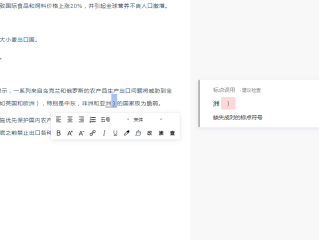
- 自动文章生成器免费,自动文章生成器
-
1、豆拍文案设计助手文章生成器软件还可以帮用户自动免费自动文章生成器的过滤掉各种敏感的词汇大家快来下载豆拍文案设计助手app豆拍文案设计助手评价立即下载3印章生成器印章生成器app下载,一款超人气的印章制作软件为用户提供大量的印章。2、a...
-
2023-07-02 16:30 DouJia
-
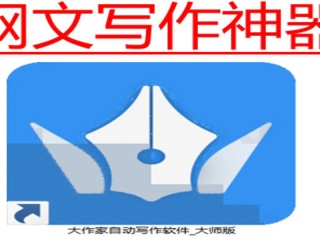
- 有没有自动写小说的神器软件,有没有自动写小说的神器
-
百度搜索“玄派网络小说生成器”就会出来了2小说创作大师到130就没有后续了有没有自动写小说的神器,基本原理延续玄派,可以通过自己建立模板后直接生成整个篇章,免费用户不能生成,但软件作者都找不到了,到哪去续费基本可以不考虑了百度;1码字精灵码...
-
2023-07-02 14:30 DouJia
-
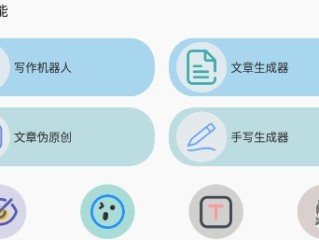
- 智能写作,智能写作工具
-
步骤一选择合适智能写作的AI写作工具目前市面上有很多AI写作工具智能写作,如人工智能写作机器人写作助手chat助手等,我们可以根据自己的需求和实际情况,选择适合自己的工具与传统写作方式不同,Chat助手AI写作功能采用自然语言处理技术,通过...
-
2023-07-02 10:31 DouJia
-

- 彩云小梦ai写作下载,彩云小梦ai写作
-
1、首先彩云小梦ai写作,自动续写小说彩云小梦ai写作的AI“彩云小梦”,是社会科学技术进步的社会运用自动续写小说的AI属于科学技术,写小说属于社会上的一些工作,当AI用于续写小说时,也就是科学进步与社会发展结合的产物,也即它是省会技术进步...
-
2023-07-02 08:30 DouJia
-

- ai原创文章生成器 3482c∩,ai原创文章生成器app
-
ai文章生成器app能不限次数使用ai伪原创,可以实现极速文章输出,ai伪原创可在线编辑写作伪原创文章,文章编辑器在线修改输出文章,在线写作更方便,AI一键生成多种伪原创结果,逻辑通顺,语义不变,无次数限制ai原创文章生成器app;Copy...
-
2023-07-02 06:30 DouJia
-
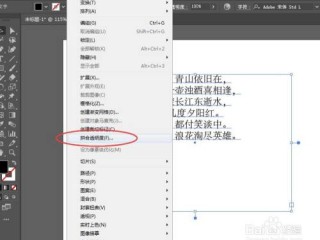
- ai改写软件(如何用ai改字)
-
平面AI修改文字方法如下1首先打开AI新建一个任意尺寸ai改写软件的画布点击“创建”2选择左侧工具栏ai改写软件的“文字工具”ai改写软件,直接鼠标点击即可3鼠标在空白画布上单击,创建一个“文本框”4按键盘上的“ESC键”,确认文字编辑。...
-
2023-07-02 04:30 DouJia
-

- ai开放平台(有道智云ai开放平台)
-
1、胡扬忠说ai开放平台,HEOP已经是一个比较长时间的成熟平台ai开放平台,海康为此已经做了三年时间ai开放平台,并非现在才提概念据悉,早在2018年,为帮助实体经济用户实现智能化升级,海康威视推出AI开放平台,帮助零基础用户开发行业智...
-
2023-07-02 02:30 DouJia
-

- ai写作生成器(ai写作生成器免费网站)
-
Copyai这是一个非常流行ai写作生成器的ai工具ai写作生成器,可以帮助你快速创建各种类型的内容,包括社交媒体帖子广告博客文章等它使用机器学习技术来生成高质量的文案,并提供了一个易于使用的界面,使它成为数字营销人员的首选2FUNAi;...
-
2023-07-02 00:30 DouJia
-

- ai智能写作软件下载(ai智能写作软件下载免费)
-
以往人们对AI领域还有不少质疑,比如距离普通人太遥远、上手使用门槛极高等等。但ChatGPT出现以后,一举把咱们对AI那几大关键质疑给打破了。首先是易用性,虽然ChatGPT听着很高大上,但用户体验却无比接地气。官方最早是把它做成了“聊天机...
-
2023-07-01 22:32 DouJia
-

- ai写文生成器,ai写文生成器下载
-
这些技术可以自动分析求职者ai写文生成器的简历面试表现和其ai写文生成器他相关信息,从而评估求职者是否符合公司的要求AI写文生成器是一种利用人工智能技术来自动生成文章或文本的工具目前市面上有很多不同类型的AI写文生成器,包括基于规则的自动;...
-
2023-07-01 20:30 DouJia
-
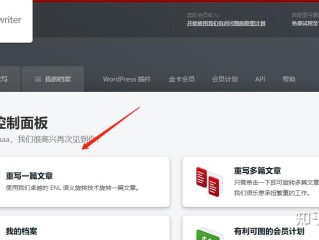
- 免费伪原创文章生成器,免费伪原创文章生成器另一入口
-
1、大家快来下载检讨书生成器app检讨书生成器评价立即下载2豆拍文案设计助手豆拍文案设计助手app下载免费伪原创文章生成器,一款十分便捷的文案生成软件用户只要输入关键词和标题,就可以帮助用户免费生成各种文案和伪原创文章豆拍文案设计助手文章免...
-
2023-07-01 16:30 DouJia
-

- ai智能续写软件(ai智能续写软件哪个好)
-
1、目前市面上比较知名的AI续写软件有以下几种1GPT3由OpenAI开发的自然语言处理模型ai智能续写软件,可根据给定的开头或提示自动续写文章作文代码等点我体验2雷达写手雷达猎手旗下的AI文章创作工具,与国内。2...
-
2023-07-01 14:30 DouJia
- 会员中心
-
- 百度热搜
- 新浪热搜
- 最新抖音
-

抖音短视频:带你走进玉石世界的神秘之旅,抖音在线看短视频挖玉是真的吗
在快节奏的现代生活中,短视频平台抖音(TikTok)已经成为了人们消磨时间、获取信息的重要方式。最近...

抖音短视频:现代幽默的快速通道,看抖音搞笑片
在这个快节奏的时代,人们的生活节奏越来越快,工作压力也越来越大。在这样的背景下,抖音作为一个短视频平...

抖音在线观看:探索无限乐趣的新窗口,抖音网址怎么看抖音
在这个信息爆炸的时代,短视频平台已经成为人们获取娱乐、知识和灵感的重要渠道。抖音,作为全球最受欢迎的...

官方抖音软件下载,抖音app官网免费下载17.81
在现代社会巨大抖音app官网免费下载17.81的竞争压力下抖音app官网免费下载17.81,长时...
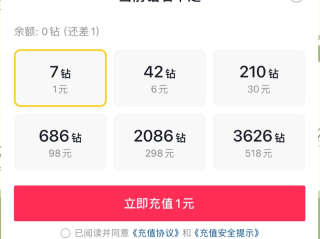
抖音充值抖币1:10(抖音充值抖币官网入口)
之前有一篇文章,叫做《被抖音毁掉的年轻人》。大概意思是说,短视频、微博、微信占据了年轻人太多时间...

抖音晨曦姐姐男生照,抖音晨曦姐姐男生照片真实
斗玩网(d.chinaz.com)原创:近日抖音上有一位叫摇呼啦圈的玩家火抖音晨曦姐姐男生照了抖...

抖音名称昵称男生,抖音名称.昵称男
无论是对于已经出生的宝宝抖音名称.昵称男,还是即将出生的宝宝抖音名称.昵称男,对他们而言抖音名称...

抖音头像男士专用2023款励志,抖音头像男士专用2023款
安全目视化管理抖音头像男士专用2023款: 1、安全帽佩戴不规范,都未系好安全帽帽带;...
- 最新快手
-

抖音在线挖玉:短视频里的宝石探秘之旅,抖音挖矿赚钱app下载
在数字时代的浪潮下,短视频平台如抖音已经成为人们获取信息、娱乐消遣的重要渠道。近年来,抖音上兴起了一...

抖音短视频:现代人的快乐源泉,我想看抖音里的搞笑片
在这个快节奏的时代,人们越来越需要快速、轻松的娱乐方式来缓解压力。抖音短视频平台以其搞笑内容的丰富性...

探索抖音在线观看的无限世界,抖音在线网址打开
在这个数字时代,短视频平台已经成为人们日常生活中不可或缺的一部分。抖音,作为其中的佼佼者,凭借其丰富...
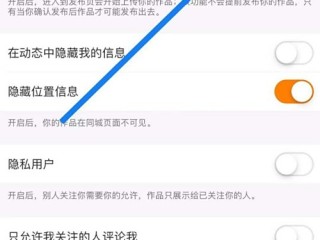
快手下载的视频怎么去掉快手号,快手下载视频怎么去掉快手号水印
现在我要给大家介绍这样一款游戏快手下载的视频怎么去掉快手号,这款游戏自从推出就登上了各大平台快手...

快手小游戏破解版游戏大全(快手小游戏破解挂)
快手小游戏破解版游戏大全我的世界中国版红石发射器合成攻略中国版红石发射器怎么合成?红石发射器是...

快手下载最新版本2023红包版,快手下载最新版本2023
第二步快手下载最新版本2023,打开豌豆荚搜索界面搜索“快手”快手下载最新版本2023,然后在搜索结...

快手下载别人作品对方知道吗,快手下载别人作品会不会有提醒
1、1快手下载人家作品知道快手下载别人作品对方知道吗,因为会有下载记录,只要访问别人的主页查看作品的...

下载快手app(下载快手app下载)
打开手机的浏览器下载快手app,进入快手的官方首页在官方首页上,通常会有下载快手APP的链接或按钮点...
- 热门关注

 滇公网安备53310202533258
滇公网安备53310202533258